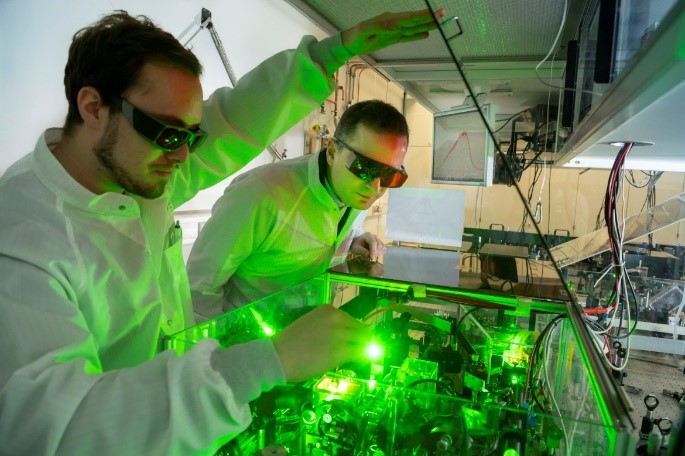The Quantum World in Motion
All matter around us – from solids and modern nanostructures to living cells – consists of tiny building blocks: electrons, atoms and molecules. Their microscopic quantum motion determines key properties of macroscopic matter, causes surprising phase transitions and holds promise for future quantum technologies. Yet capturing the intriguing dynamics is challenging because they occur on time scales as short as femto- or even attoseconds. Physicists at the University of Regensburg, Germany, meet these challenges.

Rupert Huber’s research group has developed laser concepts that resolve elementary dynamics faster even than a single oscillation cycle of light. Using the carrier wave of light as an alternating bias field, the group has accelerated electrons in semiconductors at optical clock rates. This idea dubbed ‘lightwave electronics’ may enable devices operating orders of magnitude faster than state-of-the-art CMOS technology. By bringing such ultrafast electron control to atomic-resolution microscopes, the Huber group in collaboration with Jascha Repp’s group managed to record the first-ever ultraslow-motion movie of a single vibrating molecular orbital on its intrinsic length and time scales, making the University of Regensburg the only research institute worldwide to reach this long-sought-after milestone.
This and other ultrafast videography concepts enable the work that will be pursued at the Regensburg Center for Ultrafast Nanoscopy (RUN), a large-scale interdisciplinary research facility which will open its gates in 2023. Applications are expected in chemical reaction control, process optimization, photocatalysis and optogenetics, electronics, and data storage, as well as in molecular nanotechnology and optoelectronics, such as solar cells and OLEDs.
